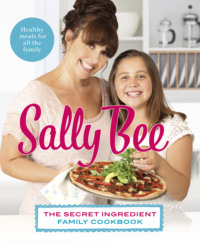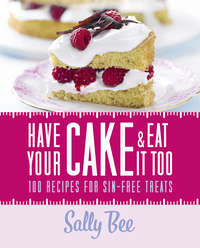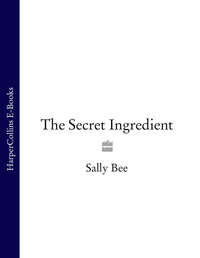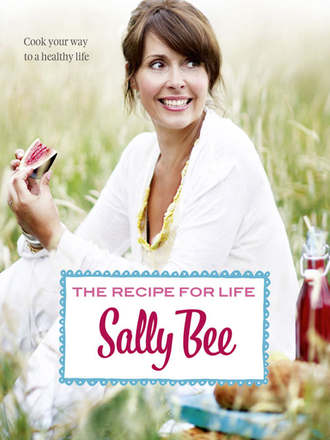
Полная версия
The Recipe for Life: Healthy eating for real people

The Recipe for Life
Sally Bee
Healthy Eating for Real People

Dedication
This book is dedicated to all my very precious and gorgeous friends. You know who you are.
But especially, this is for Dogan, the love of my life. Always.
Contents
Introduction
Soups
Salads
Sides and Starters
Chicken and Turkey
Fish
Red Meat
Vegetarian
Desserts
Drinks
Acknowledgements
Credits
Copyright
About the Publisher
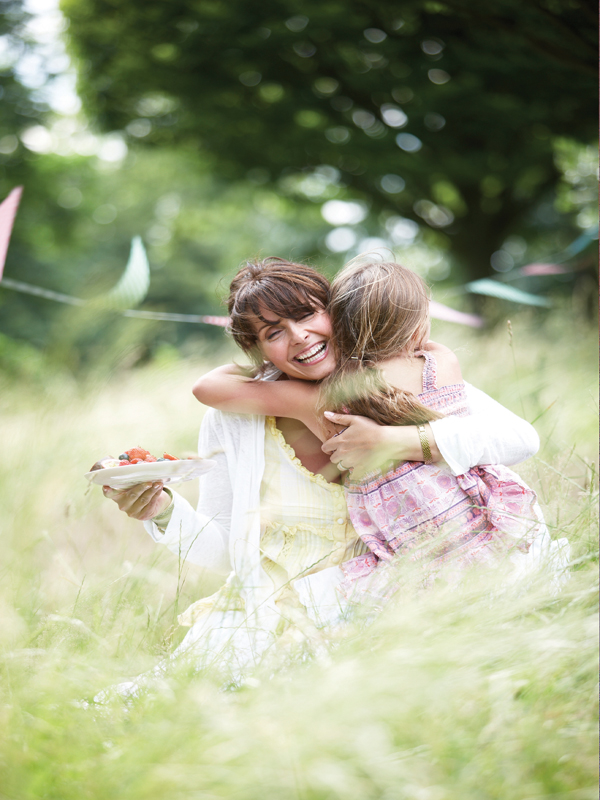
Introduction
In my first book, The Secret Ingredient, apart from all the lovely, healthy recipes, I wrote about my experiences when I suffered three heart attacks in the space of one week at the tender age of 36. I spoke about the moment my husband was told to come and say his goodbyes, and about the immediate effects the experience had on both my family and myself. The trauma I suffered was huge, both physically and emotionally, and it took such a long time to recover to the level of fitness that I have now, happily, achieved.
So, moving on, I’d now like to share with you the next stage of my recovery, which will lead on nicely to the delicious recipes included in this book. It may seem like a strange partnership: survival, recovery and food. But if you read on, I think you’ll start to understand what good healthy food has meant to me, and maybe it will help you understand your relationship with food a little better. I hope so…
MY FRAGILE HEART
To briefly recap on my story so far, I suffered from three very serious heart attacks when I was aged just 36. At the time I was mum to a five-year-old, a two-year-old and my baby was just nine months old. So life was pretty busy, as you can imagine. My heart attacks hit me completely out of the blue. I was, or thought I was, fit and strong and healthy. As a mum of three young children, there was never time to sit back and be poorly, but I was happy. My heart attacks weren’t caused by the usual heart disease, rather, a rare and usually fatal condition called Spontaneous Coronary Artery Dissection (SCAD). In essence, what happened was that the main artery inside my heart that was responsible for feeding the large bulk of the heart muscle with blood and oxygen fell apart, or ‘dissected’. If my artery had just dissected in a small area, the doctors could have performed a bypass operation to save me, but because the dissection went from the top of the artery to the very bottom, the doctors knew there was nothing they could do to save me, so they simply left me alone and told my husband to come in and say goodbye.
Just as my husband Dogan came into the operating room, and I realised that I was still alive, my battle began. The next few minutes were dramatic. My body was giving up but my mind had taken control. I had allowed myself to think about the children…and my life…and I wasn’t ready to give it all up yet. It was a struggle because by this stage my failing heart and other organs had other ideas–good job I’m a strong-minded chick!
The following days passed in a bit of a blur. I couldn’t move, talk, cough or cry without my heart going into melt down. The nursing staff where struggling to understand what was happening to me. The monitor that I was constantly hooked up to couldn’t recognise the rhythms that my heart was getting into, yet it kept coming out of all the little episodes, still ticking! After a few days, I demanded that they wash my hair. I was told in no uncertain terms that I had no chance. I couldn’t even get up to go to the bathroom at this stage, so a hair wash was completely out of the question. Let’s just say I have great powers of persuasion, and with a team of doctors and nurses on stand-by ‘just in case’, I was shuffled on my back to the end of my bed, with my head just tipping off the end and my hair was washed. It felt amazing. When my mum arrived bearing my lipstick the following day, I knew I had to continue with this approach to have any chance of a normal life again.
But it wasn’t so easy. Between writing my previous book and this one, my lovely mum was diagnosed with cancer and, just a short nine months later, she died. The grief and sadness we all suffered when we learned about her diagnosis was at times unbearable and overwhelming, but at least we knew what to expect, so could begin to prepare ourselves. We knew that mum’s journey from this point had a beginning, a middle and an end. I remember very vividly the day she was told it was terminal. We all had a big cry and a little quiet time, then arranged a big, happy party for all our family and friends the following weekend. Looking back now, how crazy that seems. Mum spent the final two weeks of her life in a wonderful hospice near my home and my dad and I spent every possible moment with her. Those two weeks were the most precious weeks of my life. Although unbearably painful, we all knew and understood what was going to happen and my mum accepted it fully, I think. This didn’t make it any less upsetting or painful, but it did mean that we knew what we had to do. My mum even managed to make her own funeral arrangements, being bossy about what we were allowed to sing, wear and eat!
In contrast, after my heart attacks, I didn’t know what I was supposed to do. I hadn’t been told I would definitely die but I also wasn’t told that I would definitely live. Because my heart condition is so very rare, my cardiologists couldn’t find any other survivors that I could talk to. So I was sent home without any positive prognosis, just a continuing feeling of impending doom and uncertainty. I was scared of everything in the beginning. Absolutely everything. I was afraid to laugh, afraid to cry, to get angry or upset, afraid to shout and love. I was so scared to move too quickly, I couldn’t drive, I couldn’t play with my children or go out with my friends. I was afraid to go out of my front door and, at the same time, afraid to stay at home. I couldn’t seem to find a way out of the prison that was now my life.
Although my family and friends were happy and pleased to see me back home, they didn’t really understand what I was going through. I don’t think I helped the situation, as I was a great pretender! When I got a little stronger, but was still struggling to cope with day-to-day things, I would go through a great long process to appear normal to those around me. My eldest son was five years old at this time and he was desperate for me to pick him up from school, just like the other mums, but I couldn’t manage the walk around the block to walk him home as he wanted. So instead, I would spend the entire day getting ready. Washing and drying my hair was a three-hour process, including all the rests I needed in between. Then I would get my mum or husband to drive me round the corner to school, long before any of the other parents arrived. I could sit quietly on the bench in the playground to get my breath back. When the other parents arrived I would smile happily and give everyone a big wave. I could see them wondering what all the fuss was about. They had heard that I was gravely ill, yet here I was looking fine! If only they knew. So my super little chap would run out of school and I would be able to stand up and throw my arms around him and hear all his excitable babble from his day that just had to come out the moment he saw me. Mission accomplished. I was a normal mum for my five-year-old precious boy. I would then sit down while a friend walked Tarik home, and when everyone else left the playground I would be quietly helped back to the car and be driven home. Exhausted.
So life continued like this for a while and I suppose for that time I accepted that this was as good as it was going to get. Then I was lucky enough to reach a tipping point, which changed my life again, forever. I had just reached the first-year anniversary of my heart attacks and was due at one of my regular check-ups with my cardiologist. He told me that I needed to have a special scan to detect a possible problem in my aorta. (Because my main heart artery had dissected from top to bottom, it was thought that this dissection might have started above, in my aorta, causing a life-threatening aneurism.) This was a potential problem all along apparently, but as nobody imagined I would survive a year, it seemed unnecessary to worry me further. But as I had reached this point, there was a strange urgency to deal with the problem. They were going to pull a team together to perform the scan in three weeks time and, if they found the aneurism, I would have two choices: either live with it until it killed me, or operate, without great chances of survival. Not the best choices in the world. I felt like I’d been given another date that I might die. During the three weeks leading up to my scan, I was incredibly agitated and felt I had to keep myself busy. When I wasn’t crying, I was making arrangements, again, ‘just in case’. I got all the children’s clothes organised for the following season and gave my girlfriends instructions on where to buy their clothes if I wasn’t around. I taught Dogan how to plait my daughter’s hair, how to measure out the children’s medicine and sign up at school for parents’ evening appointments. I spoke to his friends and told them not to let him turn to the bottle if anything happened to me–and he wasn’t allowed to get involved with any big-boobed blondes who weren’t right for my children! Dark days passed. The day of my scan dawned and, for the first time in three weeks, I was calm–just like the weather. You see the night before I had realised something that blew my mind. I realised that I had got myself into such a state that I was more afraid of living than I was of dying.
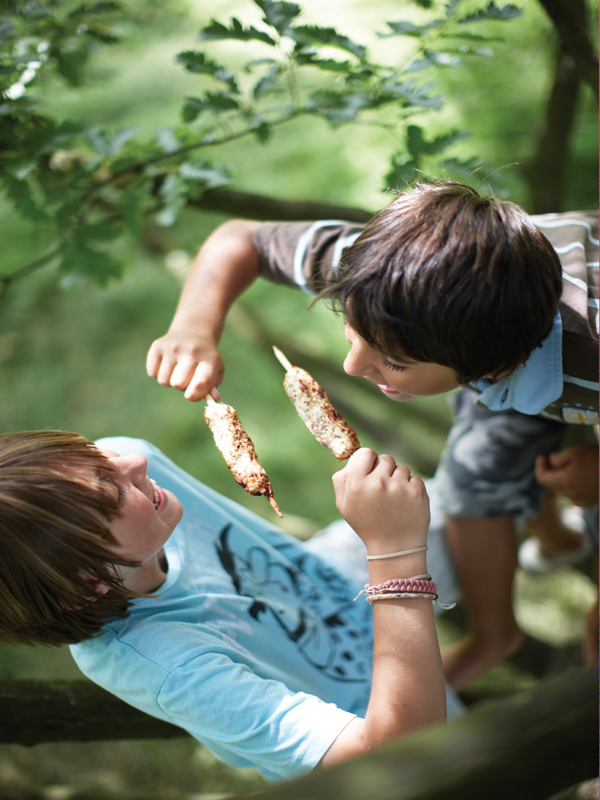
All this time I had been looking back and not forwards. I had been trying to come to terms with what had happened to me and was just surviving, not living. Now I was facing the day that my life might end and, it sounds crazy, but it was almost a relief. I suddenly realised that I just couldn’t do this any more. I couldn’t continue to live with this constant fear. I didn’t want to live if I was afraid of life. I wasn’t being the mummy I wanted to be to my children, I certainly wasn’t the wife that my husband had chosen to spend the rest of his life with. Death didn’t seem as scary as a life of fear at this point.
I thought long and hard about my life, or lack of it, and then thought back to the Sally who had demanded her hair got washed while being cared for in a high-dependency unit, and the Sally who made sure she had lipstick on even when she was on the critical list. I felt my blood run cold and my goosebumps jump. OK, if today was the day my life ended, then so be it. Bring it on! I was ready. If I had to die today, then that was my fate. But if there was any chance that I didn’t have this horrible problem in my aorta, then look out world because I was going to get back up and kick its ass! I had suffered a fright, many people do, but I was lucky that I was still here and still breathing. At that moment I made a pact with myself that, if I could get through today, I was going to start living again. But this life had to be one without fear–or I wasn’t interested. I allowed myself to imagine for a moment for that I had a future. I looked forwards and imagined that I did survive another ten, twenty, thirty or even forty years. And do you know what the most frightening part of that daydream was? The scariest part of my future was not living with the fear of dying but living while being afraid to live.
You may have gathered, simply by the fact that I am able to write this book, that I didn’t have an aneurism in my aorta. The news came back that half my heart muscle was damaged and in failure, but the other half was somehow miraculously compensating. The doctors still couldn’t tell me that I’d be OK, but that didn’t matter any more because I now believed that I had a future and the quality of it was in my hands. I was back in the driving seat. It was still scary, if I’m honest, especially for my family, but it was my life and I wasn’t going to waste another moment.
CHOOSING LIFE
So moving along five years, I’m still out there living my life and enjoying every minute. I’m as energetic as I can be, some days more than others. I still have to rest and take good care of myself all the time but this has become normal and I think I absorb it pretty well now. I am on an aggressive drug regime (and will be for the rest of my life), which, in turn, can affect my kidneys and liver but, so far, my body is coping really well with everything I throw at it. I can get some accusing looks sometimes when I bounce out of my car all colourful and glowy and put my blue disabled badge in the window. I sometimes feel that people would be happier if they saw me limping to be worthy of my blue badge–but the reality is, I must never put myself in a position where I am lifting heavy objects, including shopping, or struggling a distance if I am suffering from fatigue. So my blue badge is a must, as I would never want to put myself in a dangerous position, especially for the sake of a couple of shopping bags!
My cardiologists are still happily amazed with my progress and, considering the damage my heart has suffered, my power output is fantastic. They cannot explain why I have recovered so well. I can I put everything down to the food that I eat and the way that I move.
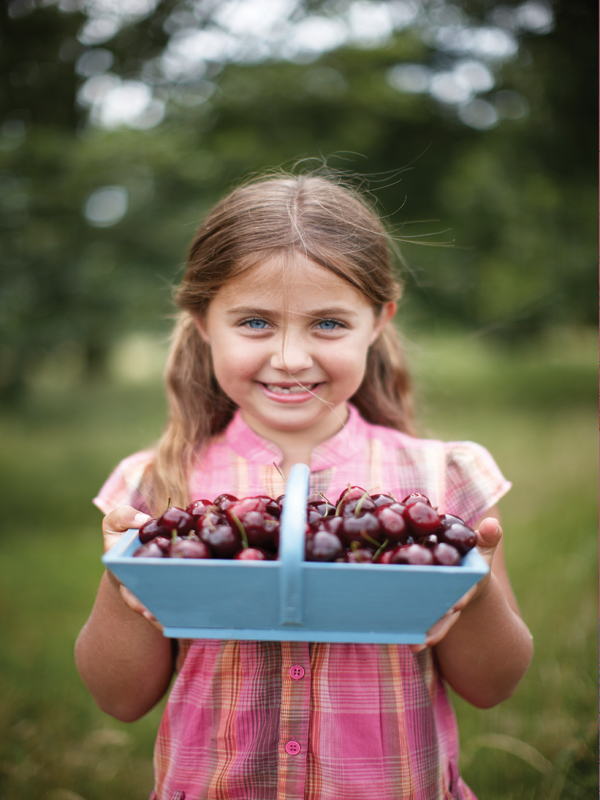
A HEALTHY LIFESTYLE–YOUR BEST INSURANCE POLICY
So how can my experience help you? Well, whether you are a heart patient or not, the truth is that these days, generally, our diets and lifestyles are not helpful in maintaining a healthy heart. My heart attacks were caused by a very rare condition, which none of you should have to worry about, but the results are the same as for anyone who has suffered a heart event: compromised heart health; ongoing medication; and the need and desire to maintain good health for as long as possible into the future. I am not a trained medical nutritionist so I would recommend that, if you have any health issues or concerns, you make an appointment with your GP who will be able to direct you to the correct information for your particular condition. If you are lucky enough to be in good health just now, it is vitally important not to waste your opportunity of securing ongoing good health for your future. You are coming from a great starting point but still, you must not underestimate the potential for problems.

We eat for enjoyment but the No. 1 reason we eat is to nourish ourselves and take care of ourselves…let’s do it well.

I survived my heart attacks because I had a good insurance policy–not financial but physical. Beforehand I had taken regular exercise, I had eaten a healthy diet, I didn’t smoke, drink or take drugs. And living a healthy lifestyle is not only good for your heart, it will help guard against other diseases, including some cancers and, as if that wasn’t benefit enough, living a healthy lifestyle will make you feel happier and look younger, too.
I have to let you into a little secret here. This book is not only for those of you who have a health issue or are recovering from poor health. We all deserve a treat and a pamper, and actually caring about our looks shows that we are looking after our health, too. After my heart attacks I was obviously devastated and have written about how desperate I felt at times. Well, I can also share with you that I shed almost as many tears over the fact that I lost a lot of my hair! I think it was probably due to the shock and the medication that I was on, but my cardiologist didn’t have it on his list of priorities to deal with. I did! I found it devastating–thank heavens for the magic of hair extensions. It may seem a little frivolous or superficial, but actually, our looks can have a massive impact on the way that we feel. So if you feel that you’d like to regain a little of your youthful complexion or shiny hair as well as the energy of a 21-year-old (I wish!), then try eating a nourishing and healthy diet and you will soon start to notice some wonderfully superficial beauty bonuses. Whether you are a strong and energetic teenager, a busy young mum or dad or a grandparent taking life easy, I hope that my recipes will entice you to lead the healthiest possible lifestyle for you.
MY PHILOSOPHY
My philosophy about food is very simple. It is the only thing that can give us our health. Other things can take it away, such as drinking, smoking and a lazy lifestyle. But food is what makes us what we are. The food we eat affects our energy levels and our sleep patterns. It affects how happy we feel and the way we look–our hair and our skin

I hope my recipes prove that you don’t have to eat lettuce and jacket potatoes all day to have a nutritious dinner, and you don’t have to obsess over calories to maintain weight loss.

I am living proof that eating a rounded, healthy diet works. I was, quite literally, at death’s door and now I’m probably more energetic than many of my friends. I feel the effects of a poor diet within minutes. If I’m away from home for a few days and can’t eat what my body needs, I very quickly begin to feel tired and lethargic and fed up! I can’t make you any promises about your personal health, but you can rest assured that the healthy ingredients that I choose are all thought to be health giving in some way by doctors and scientists who are properly trained to comment.
So all my recipes will offer you nutrition and are quick and easy to make. You don’t have to be an expert chef to give yourself and your family good health–you may just need a few new ideas and a gentle nudge in the right direction.
If you’ve just been diagnosed with heart disease or another health problem, don’t think that this is a prison sentence and don’t assume that ‘diet’ food is your only choice. Try to see your situation in a positive light. You have a fantastic opportunity to take control of your future health. You have the chance to make some wonderfully positive changes that will not only benefit you but the family and friends around you. There are a few tips that I can give you from my experiences that might help you to get on the right track to a healthier future:
* Learn to listen to your body after you’ve eaten. Which foods lift your mood and help you to feel energised? Which food makes you sleepy, lethargic or sad? I think that when you listen well, you’ll soon realise that natural, unprocessed foods will lift you and energise you rather than tire you out. But don’t take my word for it–try it for yourself.
*Take notice of how you move and start to push yourself a little. When you are walking around the shops or to and from work, ask yourself if you could walk a little quicker. Then see how you feel when you do speed up for a while. Look in the mirror–you’ll probably see a lovely flushed face smiling back at you. Very healthy!
* If this is all new to you, make a commitment to have a healthy week. Spend the week eating good food and incorporating a little more movement (otherwise known as exercise) into your routine, and then properly listen to your body at the end of that week. Have you felt more energised? Have you slept well? Are you ready for another, even better and healthier week?
* Set some goals that you’d like to achieve. Maybe it’s a change of job, or looking good for a wedding in the summer or trying for a baby or running a marathon. Whatever it is that you’d like to achieve, by taking control of your health through nutrition, you should feel proud and capable of improving your self-discipline and motivation in all areas of your life. Taking control of your diet is just the beginning…
The thing that surprises people when they start to change the way they view food and exercise in the right way is that it isn’t a chore and they don’t feel that they are depriving themselves. I know that if you follow some of my recipes and start to eat for nourishment (and enjoyment of course!), you will feel and see the benefits on the inside and the outside. And what I hope will happen is that you won’t want to go back to your unhealthy ways, because you’ll love the feeling of wellbeing too much to let it slip.
THE MISSING PIECE OF THE PUZZLE
After my heart attacks, my body was badly damaged and was struggling to survive and I had to find a way to help fix it. This certainly wasn’t going to be helped purely by low-calorie snacks, soups and drinks without any nutritional benefit, and being slim alone wouldn’t fix the problem. Therefore I needed to make sure that every mouthful of food I ate gave my body some nutritional value. And at the same time, I had three young children at home and it was important to me that they grew up with a good healthy attitude towards food, just as I had done. I didn’t want them to think that a diet of mung beans and spinach was normal. Our meal times at home were, and forever will be, precious times. Meal times offer an emotional outlet for the day’s events. It’s a time when we share our stories and concerns and funny moments. And to match this mood, it’s crucial that the meals we eat feed our heart, our body and our soul. Our food is not just required to stop us from feeling hungry. It is also not just needed to give our body nutrition, although that’s obviously a most important part; food has to satisfy our emotions as well as our hunger. This is the missing piece of the puzzle that you may have been struggling to find. It’s also necessary for our food to feed our emotions. Imagine if you sat down every day to a green salad and jacket potato because you were on a ‘diet’. I think life would be pretty miserable and unsatisfying. Maybe that’s why dieters run for a big chunk of chocolate at the drop of a hat. Maybe it’s not the calories or the sugar that they crave, maybe it’s the emotional fulfilment they are lacking.

Food has to satisfy our emotions as well as our hunger. This is the missing piece of the puzzle that you may have been struggling to find.

PORTION DISTORTION
In today’s ‘the-more-you-get-the-better’ society, package sizes keep growing. Giant bottles of cola, extra large bags of crisps and king-size chocolate bars are all the rage. But as these foods get larger, so do our waistlines. Bigger packages and food items apparently distort portion control.
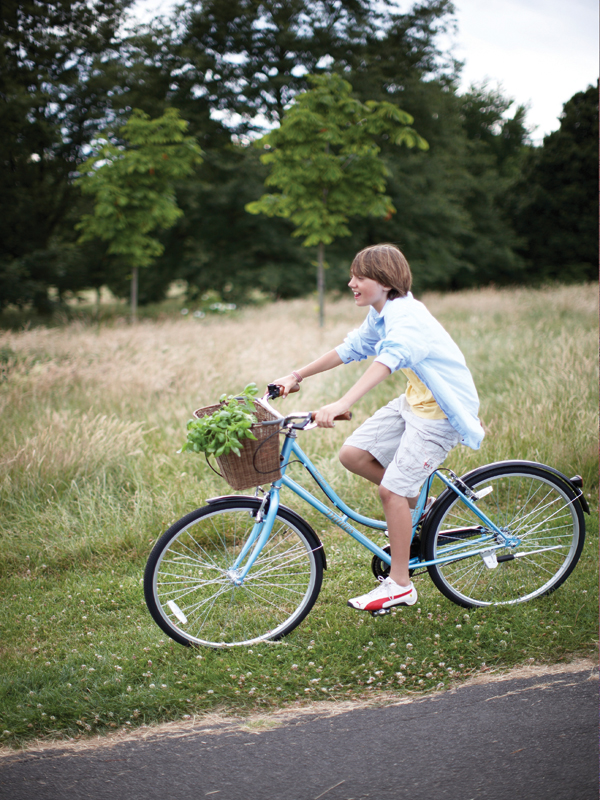
Having said this, I actually struggle with the notion that you should only eat a certain ‘size’ of meal. Instead, I would prefer you to listen to your body and know when you’ve had enough. A large nutritious, balanced meal will do you more good than a small portion of processed food. It’s also really important to take into consideration what you eat over a whole day, not just at one meal…and how much you move. If I am having a busy day with the children, running around all day long, I can get really hungry and eat a larger portion of food than usual. But as long as my intake and output are matched, I’m in good shape. Obviously, if I’m having a calmer day, maybe sitting at my computer writing, then my output is lower, so my intake needs to be lower. It’s not rocket science and you don’t have to be an expert to work it out–but you do need to get in tune with your body and work out if you are eating because you’re hungry, or for some other reason. Having said all of that, if you are overweight and would like to lose some weight, do make an effort to cut your portion sizes across the board. Using a smaller plate is always a good starting point, and always try to have your vegetable portion larger than your meat or carbohydrate portion. Good luck–you can do it!


